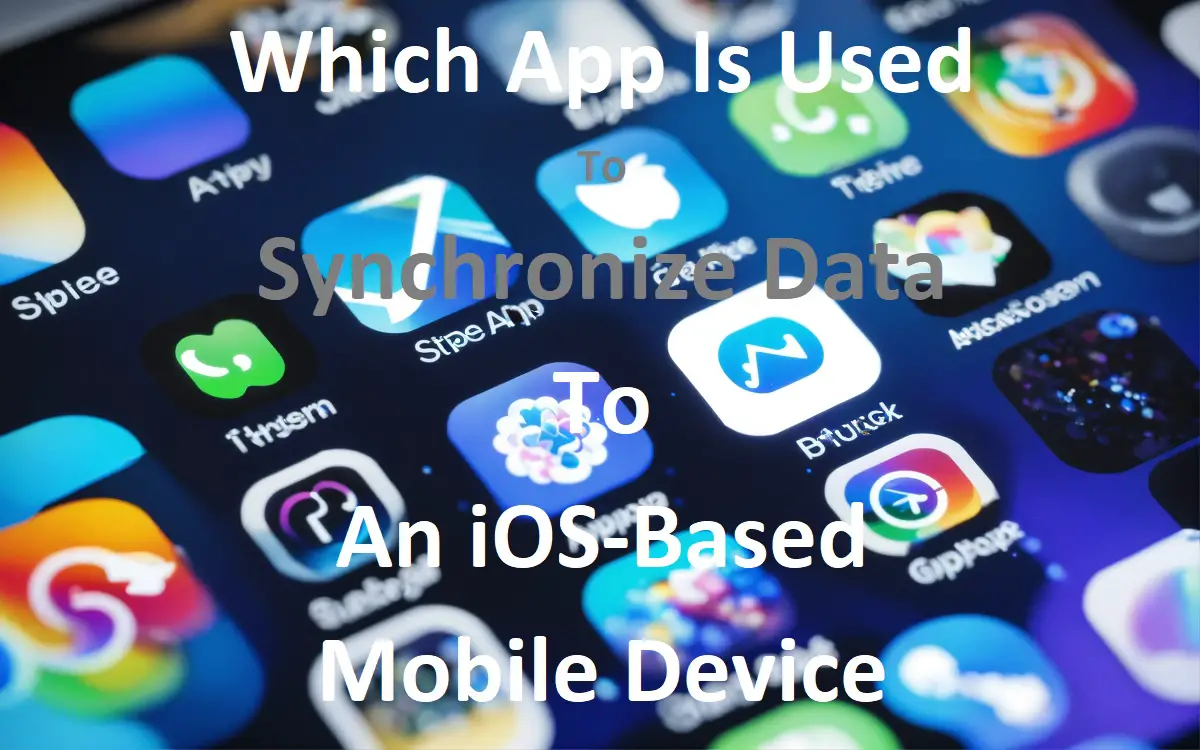Introduction
In the ever-evolving world of mobile technology, seamless data Synchronize Data to an iOS across multiple devices has become an indispensable aspect of our digital lives. For iOS users, Apple has provided two powerful tools – iTunes and iCloud – to ensure that your data, whether it be apps, music, videos, or documents, remains consistent and up-to-date across all your iOS devices. In this comprehensive guide, we’ll delve into the intricacies of data synchronization on iOS, exploring the capabilities of both iTunes and iCloud, and empowering you to maintain a harmonious digital ecosystem.
Recent Released:How To Get Link Bracelet Milanese Loop Employees Discount?
The Cornerstone: iTunes And How to Understand iTunes Sync
iTunes, Apple’s iconic media player and content management software, has long been a staple for iOS device users. Beyond its music and video playback capabilities, iTunes serves as a vital bridge between your iOS devices and your computer, facilitating effortless data synchronization.
When you connect your iOS device to your computer via a USB cable or Wi-Fi sync, iTunes automatically detects the device and presents you with a range of synchronization options. From here, you can choose to sync specific types of data, such as apps, music, videos, books, and more, ensuring that your device remains up-to-date with your latest content.
Selective Synchronization
One of the most powerful features of iTunes sync is its ability to selectively Synchronize Data to an iOS. This means that you can choose which apps, media files, or other data you want to sync to your iOS device, giving you complete control over what gets transferred and how much storage space is consumed on your device.
For instance, if you have a vast music library but only want to sync a specific playlist or album to your iPhone, iTunes allows you to do so with ease. Similarly, you can choose to sync only certain apps or exclude particular types of data. Such as podcasts or audiobooks, depending on your preferences and device storage constraints.
How to Backup and Restore
In addition to data synchronization, iTunes also plays a crucial role in backing up and restoring your iOS device’s data. Regularly backing up your device’s data to your computer or iCloud ensures that your precious information, including contacts, messages, photos, and app data. Is safely stored and can be easily restored in case of device loss, damage. Or when setting up a new device.
The Cloud-Based Solution: iCloud
Seamless Cross-Device Sync
While iTunes excels at syncing data between your iOS device and your computer, iCloud takes data synchronization to the next level by providing a cloud-based solution for seamless cross-device sync. With iCloud, your data is stored securely in Apple’s cloud servers. Allowing you to access and sync it across all your Apple devices, including iPhones, iPads, Macs, and even Apple Watch.
iCloud’s synchronization capabilities extend to a wide range of data types, including photos, documents, contacts, calendars, reminders, and even app data. This means that no matter which device you’re using. Your data will always be up-to-date and consistent across all your devices, eliminating the need for manual transfers or backups.
iCloud Photo Library
One of the standout features of iCloud is the iCloud Photo Library, which automatically uploads and syncs your photos and videos across all your devices. This feature ensures that your precious memories are backed up and accessible from anywhere, freeing up valuable storage space on your iOS devices.
iCloud Drive and Document Sync
For those who work with documents and files across multiple devices, iCloud Drive and Document Sync offer a seamless solution. With iCloud Drive, you can store and access your files from any device. While Document Sync ensures that changes made to a document on one device are automatically synced to all your other devices, keeping your work up-to-date and consistent.
iCloud Keychain
Another invaluable feature of iCloud is the iCloud Keychain. Which securely stores and syncs your account passwords, Wi-Fi network information, and other sensitive data across all your Apple devices. This not only enhances your security by protecting your login credentials but also saves you the hassle of manually entering passwords on each device.
Syncing Made Simple: A Comparison Table
To help you better understand the differences and similarities between iTunes sync and iCloud sync. We’ve prepared a handy comparison table:
| Feature | iTunes Sync | iCloud Sync |
| Data Types | Apps, Music, Videos, Books, Photos, Contacts, Calendars, Notes, Mail Accounts | Photos, Documents, Contacts, Calendars, Reminders, App Data, Passwords, Wi-Fi Settings |
| Sync Method | USB or Wi-Fi | Cloud-based |
| Backup and Restore | Yes | Yes |
| Selective Sync | Yes | Limited |
| Cross-Device Sync | No | Yes |
| Storage Capacity | Limited by computer’s storage | Limited by iCloud storage plan |
| Initial Setup | Required for each device | Automatic across Apple devices |
Conclusion
In the age of multiple devices and constant connectivity, data Synchronize Data to an iOS has become a critical aspect of our digital lives. With iTunes and iCloud, Apple has provided iOS users with powerful tools to ensure that their data remains consistent and accessible across all their devices.
Whether you prefer the tried-and-true method of syncing via iTunes or the convenience of cloud-based synchronization with iCloud. Understanding the capabilities and nuances of these tools is essential for maintaining a harmonious digital ecosystem.
By leveraging the strengths of both iTunes and iCloud, you can tailor your synchronization approach to suit your specific needs. Ensuring that your data is always at your fingertips, no matter which device you’re using.
So, embrace the power of data synchronization on iOS, and embark on a journey of seamless connectivity. Where your digital life flows effortlessly across all your devices.


